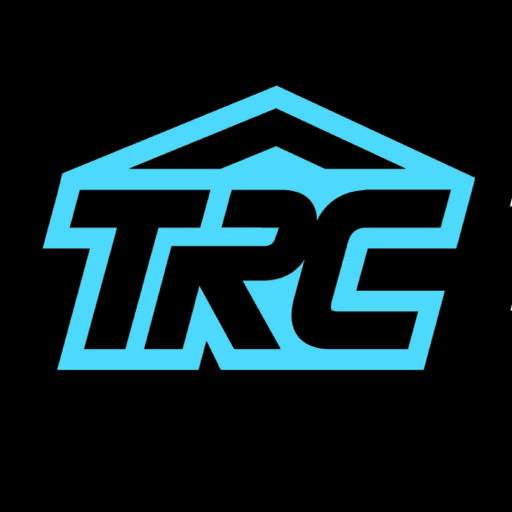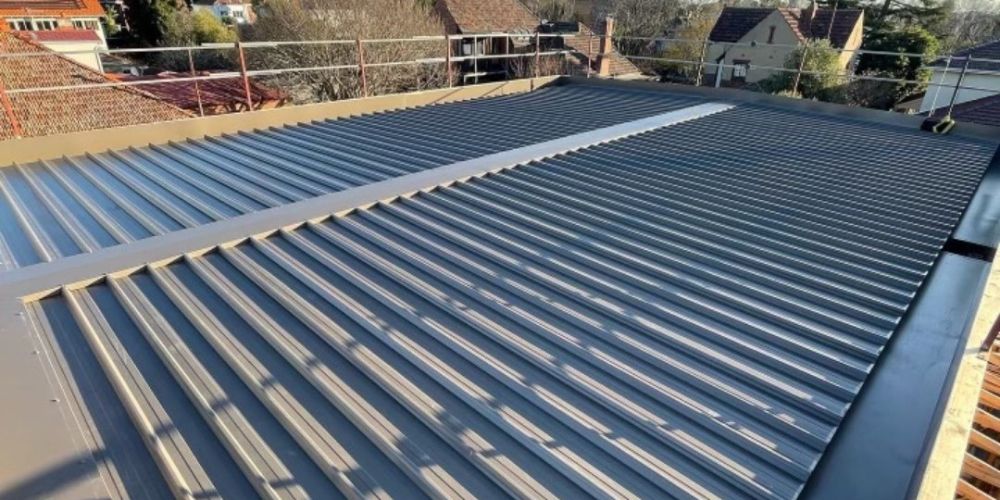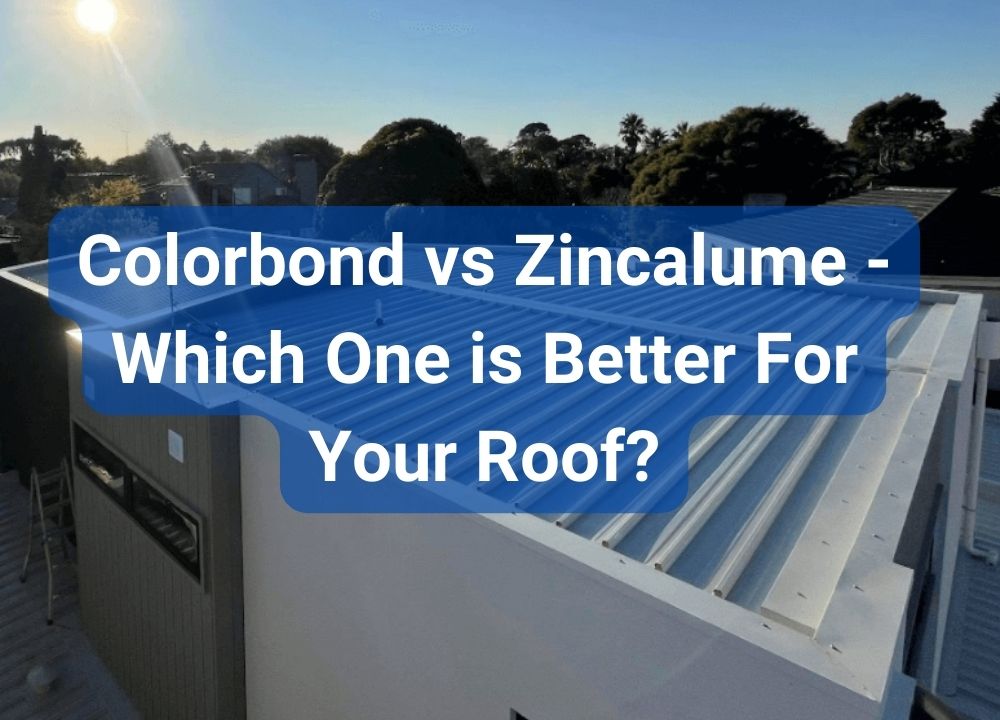Colorbond vs Zincalume - Which One is Better For Your Roof?
Colorbond and Zincalume are two common building materials used for roofing and wall cladding. Colorbond is a coated steel brand manufactured by Bluescope, whilst Zincalume is a coated steel brand manufactured by another Australian business, BHP Steel.
Colorbond and Zincalume have long been used in Australia and other parts of the world. Colorbond was first released in Australia in the mid-1960s, followed by Zincalume in the 1970s. Both items are popular due to their durability, strength, and adaptability.
But do you need help choosing between the two? Read further as we discuss and compare the difference between Colorbond and Zincalume.

Lance Mathews
In This Article

Colorbond vs Zincalume - How Do They Differ?
When deciding between these two materials, you may ask how to tell which is the best choice for your roof replacement or installation. The easiest method to choose between Zincalume roofing and Colorbond roofing is to learn about each product and weigh the benefits and drawbacks of each. Each house is unique and will have its own set of requirements.
Composition
Colorbond is a popular type of steel roofing and cladding material in Australia. It is constructed of steel as the foundation material. It is coated with a corrosion-resistant zinc/aluminium/magnesium alloy layer and a baked-on paint covering that gives longevity and aesthetic appeal. Colorbond is a sturdy and durable alternative for roofing and cladding that can resist the severe Australian environment thanks to this mix of materials.
Zincalume is a steel roofing material composed of aluminium, zinc, and silicon. Zincalume comprises 55% aluminium, 43.5% zinc, and 1.5% silicon. This metal combination produces a corrosion-resistant material extensively used in roofing and other building applications.
Appearance
Colorbond is offered in 22 standard colours ranging from classic to modern. The Australian countryside inspires these neutral tones and vivid and earthy colours. Colorbond provides metallic and textured finishes and standard colours for a more distinctive appearance.
Because of its aluminium and zinc coating, zinccalume has a metallic look. Because the silver-grey colour is reflective and contemporary, it is famous for industrial and commercial applications.
Colorbond provides a broader selection of colours and finishes, whereas Zincalume has a homogeneous metallic look. Colorbond also provides superior colour retention than Zincalume, which means the colour will remain brilliant for extended periods. Zincalume, on the other hand, has a distinct reflecting characteristic that makes it a popular option for modern and industrial structures.
Costs

Usage
Because of its durability, weather resistance, and aesthetic appeal, Colorbond is a popular choice for residential and commercial roofing, walling, and rainwater applications. It is also appropriate for a variety of architectural types and designs. Colorbond is also recyclable, with more than 90% of the steel used in manufacture recovered. As a result, it is an ecologically beneficial choice for building materials.
Zincalume, on the other hand, is well-suited for industrial and commercial applications due to its durability and resistance to corrosion. It is extensively used in warehouses, factories, and other industrial structures for roofing, cladding, and gutters. Zincalume, like Colorbond, is recyclable, with more than 50% of the steel used in manufacture recovered.
Environmental Impact
Because of its high recycled content, Colorbond is regarded as an environmentally friendly alternative. More than 90% of the steel used in Colorbond manufacturing is recycled, reducing the requirement for new steel production and conserving natural resources. Colorbond also has a minimal carbon impact because of its extended lifespan, eliminating the need for regular replacements.
Zincalume is also good for the environment because of its high recycled content. Over half of the steel used in Zincalume manufacture is recycled, reducing waste to landfills and conserving natural resources. Zincalume also has a minimal carbon impact since it may survive many years without needing to be replaced frequently.
Durability
Because of its high recycled content, Colorbond is regarded as an environmentally friendly alternative. More than 90% of the steel used in Colorbond manufacturing is recycled, reducing the requirement for new steel production and conserving natural resources. Colorbond also has a minimal carbon impact because of its extended lifespan, eliminating the need for regular replacements.
Zincalume is also good for the environment because of its high recycled content. Over half of the steel used in Zincalume manufacture is recycled, reducing waste to landfills and conserving natural resources. Zincalume also has a minimal carbon impact since it may survive many years without needing to be replaced frequently.
How To Choose Between Colorbond and Zincalume?
There are various factors to consider when deciding between Colorbond and Zincalume for roofing, including:
Budget
Colorbond and Zincalume are available at various pricing points, with the cost determined by the roof size and the installation’s intricacy. It is critical to evaluate your budget and select a roofing material that fulfils your demands without surpassing them.
Aesthetics
Colorbond is available in various colours and finishes, making it an excellent choice for individuals seeking a particular aesthetic. Zincalume has a silver-grey finish that may only work with some architectural styles. It is essential to evaluate the appearance of the roofing material and select an option that compliments the style of your home.
Climate
When selecting roofing materials, it is critical to consider your local environment. Colorbond is highly resistant to corrosion, chipping, and fading caused by UV radiation and adverse weather conditions. Zincalume is also a long-lasting material. However, it may be better for places with high humidity or salty air.
Maintenance
Colorbond and Zincalume both require routine care to stay in good shape. Colorbond may need extra upkeep, such as regular cleaning, to prevent debris and dirt from accumulating. Zincalume takes minimal upkeep but may require recoating after a few years.
Environmental Impact
Colorbond and Zincalume are both ecologically beneficial solutions due to their high recycled content and minimal carbon impact. Colorbond, on the other hand, has a more prominent recycled component.
Frequently Asked Questions
Colorbond metal roofing materials conduct heat significantly better than dwellings and other types of roofs. Metal can theoretically transport heat by conduction, convection, and radiation when one metal sheet is connected to another.
While galvanised material can provide robust performance, especially when painted, ZINCALUME’s greatest strength is the enhanced peace of mind it provides. In contrast to galvanised materials, ZINCALUME has a substrate warranty that guarantees corrosion-resistant performance for 25.5 years.
Zincalume roofing is meant to be water-resistant and is widely used in places with heavy rains. However, no roofing material is waterproof, and correct installation and care are critical in ensuring that a roof stays water-resistant over time. Furthermore, the slope and form of the roof might affect its capacity to withstand water infiltration.
Repainting will be required at some point to avoid significant product degradation. The primary aspect is the paint coating integrity to perform a proper bond for the overpainted system and ensure the endurance of the new coating system.
Key Takeaways
Several aspects, including durability, aesthetic, cost, environmental effect, and specialised application, influence the choice between Colorbond and Zincalume. The buyer’s demands and preferences will determine the ideal option. Zincalume may be preferable for people who value durability and resilience to extreme weather conditions. Colorbond is a more appealing option for individuals who value environmental effects and aesthetics
Don’t hesitate to talk to your trusted roofing and cladding contractors. They will always have the best answers on hand to your every questions

